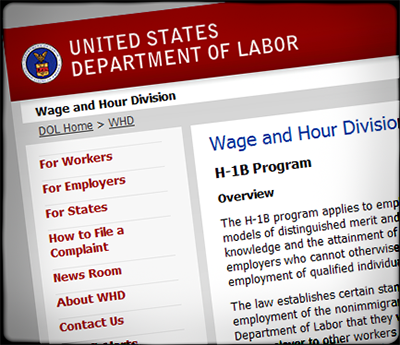
As the table and figure below show, the issuance of H-1B visas in India (which dominates the program) looks a bit like a side view of the Himalayas, and suggests that program usage may be in a temporary decline.
That metaphor is, of course, totally inappropriate, as the heavily biased recruiting for this program favors young Hindu males from the south of the country, not just Indians in general, and the mountains are in the north.
Given the lack of regular reporting by our government on the number of U.S. jobs lost because of this program — there are probably 800,000 or so H-1Bs from all over the world taking mostly good jobs in the U.S. — we have to look for clues wherever we can find them. For some reason the government, under both the Trump and the Biden administrations, is not interested in producing a regular set of numbers on this subject, as it does on so many others (levels of unemployment, acres of wheat sown, volume of illegal drugs confiscated, etc.).
Fortunately, the State Department reports every month on the number of nonimmigrant visas (including H-1Bs) issued overseas; unfortunately, this data source does not distinguish between H-1B renewals and initial visas. What this data does show is the huge impact of Covid-19 on the number of visas, but it does not show (all blessings are mixed) the number of Indians adjusting status to that of H-1B within the U.S.
Fiscal year 2019 (from October 1, 2018, through September 30, 2019), shown in red in the figure, was the last normal year of H-1B visa issuances. A total of 130,961 visas, usually multi-year ones, were issued in India (alone) in FY 2019. As the next year opened, the blue line shows that visa issuances were even more numerous, but by April Covid-19 had reduced the numbers to just about zero. The fiscal year’s total fell to 94,647.
Then, in this fiscal year (2021), the green line shows a recovery, with the number in March almost equaling the number two years earlier; 8,992 this year, as opposed to 9,631 in FY 2019.
And then, boom! The huge explosion of Covid-19 in India has terminated the issuance of all nonimmigrant visas in India as of April 30. While virus-related deaths are routinely under-reported in that country, they are clearly rising rapidly and, on a recent day, the previous day’s deaths were set at 3,841 as opposed to 221 in the U.S.
We estimate that when the State Department’s visa data for April is released there will be some 12,000 H-1B visas issued in India that month and, given the severity of the outbreak, that there will be none, or virtually none, in May, as the broken green line shows.
H-1B Visas Issued in India |
|||||||||||||
| FY | Oct. | Nov. | Dec. | Jan. | Feb. | Mar. | Apr. | May | Jun. | Jul. | Aug. | Sept. | Total |
| 2019 | 8,233 | 12,787 | 18,508 | 14,709 | 11,314 | 9,631 | 7,849 | 9,764 | 9,794 | 10,585 | 9,484 | 8,303 | 130,961 |
| 2020 | 13,570 | 16,383 | 24,850 | 18,887 | 13,943 | 6,111 | 15 | 78 | 78 | 78 | 46 | 608 | 94,647 |
| 2021 | 701 | 1,317 | 2,414 | 3,186 | 6,525 | 8,992 | N/A | N/A | N/A | N/A | N/A | N/A | N/A |
|
Source: U.S. Department of State. |
|||||||||||||
H-1B Visas Issued in India |
 |
|
Source: U.S. Department of State. |
Impacts on the U.S. Labor Market. H-1B-loving employers will not necessarily have to turn to U.S. workers (who are not semi-indentured, as H-1Bs are) as they have two other sources. These are: 1) the supply of potential H-1B workers already in the U.S. who can adjust to H-1B status without leaving the country; and 2) Optional Practical Training (OPT) workers.
While H-1B visas can be (and are) renewed again and again (particularly if the employer has filed a green card request for the worker in question), OPT workers come with a sell-by date of one year for the non-techies and three years for the techies. OPT workers, though they are technically free to wander around the labor market are, in a sense, indentured, because they want to get into the H-1B program.
OPT workers also have a little-publicized advantage: They come at an 8.3 percent or so discount. This is because their employers do not need to pay the payroll taxes that support our threatened Social Security, Medicare, and federal unemployment insurance trust funds. Employers who decide to hire a recent citizen college graduate get no such breaks.
Our sense is that the decline in H-1B visas is having these impacts on the H-1B program:
- It will lower the total numbers of H-1B workers in the nation, at least for the time being; and
- There will be an increasing percentage of Indian graduates of U.S. universities among H-1Bs, rather than alumni of Indian universities.
